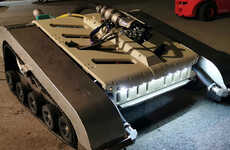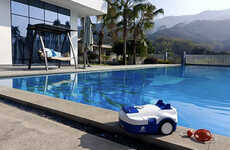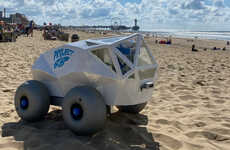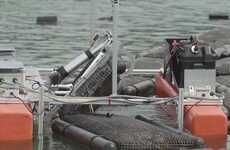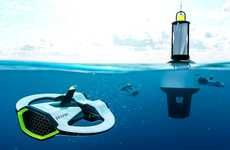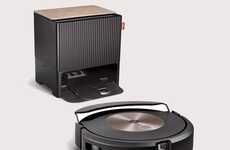
IADYS's Jellyfishbot Collects Waste from the Surface of the Water
Colin Smith — March 15, 2022 — Eco
'Interactive Autonomous DYnamic Systems' (IADYS) has created an ocean-cleaning robot named the 'Jellyfishbot.' IADYS calls the Jellyfishbot a "Roomba for the water" because the device cleans the surface of any body of water entirely on its own. While users can choose to manually control the Jellyfishbot remotely, this is not a requirement.
The Jellyfishbot has several propellers that allow it to travel forward, backward, and turn to the side. This means the robot can maneuver dynamically without getting stuck in a corner of a body of water. To set up the automatic cleaning feature, users must equip the Jellyfishbot with a net and set the desired cleaning area. The net holds the collected trash until it is manually emptied. The robot's battery lasts up to eight hours when operating automatically, and its net can hold up to 20 gallons of waste. This means the Jellyfishbot can conveniently operate overnight while oceans are less populated, ensuring that the surface of the water remains clean for the next day.
Image Credit: IADYS
The Jellyfishbot has several propellers that allow it to travel forward, backward, and turn to the side. This means the robot can maneuver dynamically without getting stuck in a corner of a body of water. To set up the automatic cleaning feature, users must equip the Jellyfishbot with a net and set the desired cleaning area. The net holds the collected trash until it is manually emptied. The robot's battery lasts up to eight hours when operating automatically, and its net can hold up to 20 gallons of waste. This means the Jellyfishbot can conveniently operate overnight while oceans are less populated, ensuring that the surface of the water remains clean for the next day.
Image Credit: IADYS
Trend Themes
1. Automated Ocean Cleaning - There is a disruptive innovation opportunity for robotics companies to create more efficient automated ocean cleaning machines to tackle the growing problem of ocean pollution.
2. Smart Waste Management - There is a disruptive innovation opportunity for tech companies to create dynamic waste management solutions that can collect, separate, and dispose of waste safely and efficiently.
3. Remote Control Technology - There is a disruptive innovation opportunity for companies to create advanced remote control technology that can be used to control ocean cleaning robots, making the operation smoother and more efficient.
Industry Implications
1. Robotics - Robotics firms have an opportunity to advance the development of ocean cleaning technology, designing and building new advanced automated ocean cleaning robots.
2. Sustainability - Companies in the sustainability sector can leverage the growing concerns of ocean pollution to develop and deploy ocean cleaning solutions that can address the current environmental crisis.
3. Water Management - Water Management professionals have an opportunity to work with technology firms to develop better tools to extract waste from bodies of water and to improve the overall quality of water worldwide.
3.6
Score
Popularity
Activity
Freshness



